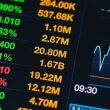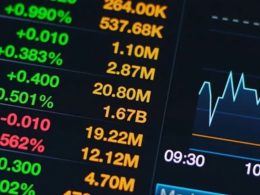by Cullen Roche, Pragmatic Capitalism
You know an idea is starting to go mainstream in the investment world when it hits the pages of the Wall Street Journal. I have been harping endlessly this year about how important it is to understand that passive investing is a myth and a marketing tale. And today, we see this post by Josh Brown citing David Snowball in the WSJ:
WSJ: Active or passive? Do today’s fund managers face an insurmountable challenge in beating quantitative systems?
MR. SNOWBALL: “Passive” doesn’t exist. The closest we come to it is Voya Corporate Leaders Trust (LEXCX). Otherwise, it’s a fantasy woven by marketers and advisers. Index funds represent portfolios of stocks selected by flawed, conflicted and occasionally dunderheaded human beings. The Dow and S&P 500 are both good examples of portfolio by committee.
I suspect a better dichotomy is this: disciplined, cost-effective portfolios versus undisciplined, cost-maximizing ones. Many but not all passive products fall in the former. Many but not all active products fall in the latter. Those observations underlie our conclusion that 80% of all funds, active and passive, could vanish without any loss to anyone other than their sponsors.
Precisely. The word “index” has really become muddled in today’s world where we have an “index” of just about everything. But the reality is that there is only one true index and that is the index that represents all of the world’s outstanding financial assets. In other words, there is, at the aggregate level, just ONE portfolio. If you were actually passive you would “take what the market gives you” and you would never deviate from this portfolio. But that’s not what most investors do. Most of us deviate from global cap weighting by necessity thereby rendering us all asset pickers of some sort. For instance, if you buy the SPY index then you’re making an active choice about 500 specific stocks. But the S&P 500 is less than 15% of the world’s financial assets. It’s not a comprehensive index of US stocks, global stocks and certainly not a comprehensive global financial asset portfolio. There is no practical difference between buying and holding this index of 500 chosen stocks and buying and holding 5 stocks except that your costs could end up being higher if you’re paying someone a fee to pick those stocks on your behalf (your fees could actually be even lower with the 5 stocks due to no recurring fees if you choose to pick them yourself) and you’re likely taking more risk with the 5 stock portfolio. But you’re not “passive” just because you chose an index that is comprised of a certain group of specifically chosen assets that leaves you without exposure to over 85% of the world’s financial assets. It gets even worse when you notice how indexers misrepresent some of their “active” endeavors by calling it “factor tilting” or “rebalancing”….
The vast majority of “passive” investors who I come across have never thought about things this way from such a macro level. They don’t realize they’re picking assets inside a much larger global cap weighted portfolio. And it leads them to believe that what they’re doing is necessarily smarter than what other people are doing. But in most cases they’re just picking a low fee way to diversify. Whether their process is actually smart is still highly subjective. But one thing is for certain – we are all active asset pickers by necessity. The scary thing is that even the professionals who promote this idea often don’t understand that they’re being active. As I showed in this analysis, even the passive index fund investors who wrote this widely distributed study demonizing mutual fund managers are actually underperforming as well because they picked funds within the global aggregate. The irony and misinformation in all of this is almost too much to bear….
Anyhow, it’s nice to see this idea catching some traction.
Copyright © Pragmatic Capitalism












